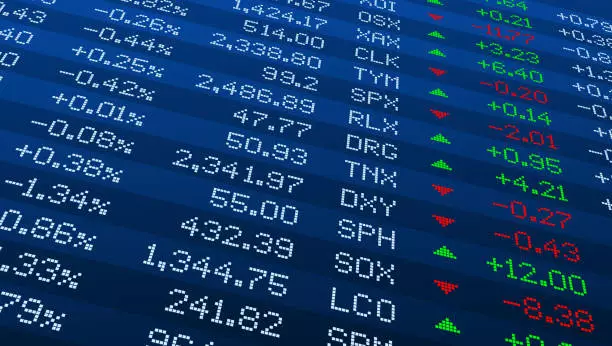In the ever-shifting landscape of Wall Street, the recent surge in major indices illustrates the underlying optimism among investors, especially in light of encouraging earnings reports from major banks. As the calendar progresses toward the end of the month, heightened expectations surrounding earnings from the technology sector loom, potentially setting the stage for a significant rally. However, while the overall momentum appears positive, a critical assessment reveals complexities worth exploring.
The market’s optimistic trajectory is primarily catalyzed by the earnings reports from noteworthy banks, with institutions such as J.P. Morgan Chase and Wells Fargo outperforming expectations. Their robust financial results not only buttressed investor confidence but also sparked a significant rally across major indices. However, a closer inspection reveals a nuanced picture: while these earnings are promising, the immediate aftermath has varied outcomes among different sectors. For instance, while Bank of America’s earnings managed to stabilize its shares after an initial dip, the overall impact of its report was less glowing compared to its peers.
This divergence in performance among financial firms accentuates the mixed sentiments that can often accompany earnings season. The reality is that not every banking institution shares the same positive trajectory, which introduces a layer of volatility into market dynamics. Yet, the overarching sentiment fueled by stronger-than-expected results may overshadow these inconsistencies in the short run.
Technological Expectations and Upcoming Reports
As we approach the latter half of October, the anticipation surrounding earnings from technology giants adds another dimension to the market’s outlook. Historically, tech companies have been significant drivers of market growth, and with many expected to report substantial year-over-year growth, investors are eager to see how these earnings will influence index performance.
With major players in the technology and communication sectors slated to unveil their results, there’s an inherent volatility on the horizon. This excitement carries the potential for both upward momentum and downward corrections, particularly if results do not meet lofty market expectations. If tech firms deliver stellar performances, the momentum may further bolster indices as they head into crucial political and economic events, such as the impending U.S. elections. The concept of a “Santa Rally” in December may also weigh in favor of this optimism, suggesting a sustained upward trend as we transition into 2025.
The Impact of Oil Prices on Market Sentiment
However, not all sectors are basking in the glow of positive earnings. The energy sector presents an intriguing counter-narrative, especially amidst a recent decline in crude oil prices. Companies like Exxon Mobil, Chevron, and Occidental Petroleum are experiencing downward pressure, attributed partly to decreased fears regarding supply disruptions in the Middle East. This unfortunate trend highlights the volatile nature of energy markets and its spillover effects on investor sentiment and share valuations.
The stark contrast between the banking sector’s growth and the energy sector’s struggles shows how interconnected yet diverse market responses can be amid wider economic trends. Attention must also be paid to how these fluctuations in oil prices might influence broader inflationary pressures and Federal Reserve policy decisions in the upcoming months.
From a technical analysis perspective, the S&P 500 is demonstrating signs of sustained bullish behavior, with key resistance levels identified in the near future. The breakout from a previous triangle formation signals positive momentum; however, expert analyses suggest that this upward drive may be reaching a crucial inflection point.
Potential targets for the S&P 500 are set between the 5910 and 6169 handles, with the recent highs indicating strong interest from bullish traders. Nonetheless, the sheer pace of the recent rally may deter new entrants seeking advantageous buying positions. This creates a challenging environment for investors looking to capitalize on temporary oscillations before significant price levels are tested. A critical understanding of the inherent risks is essential, as corrections often occur when markets become overly extended.
Wall Street’s current momentum reflects a blend of positive earnings reports, especially from financial institutions, and anticipatory sentiments towards future tech sector performance. However, the fluctuations within the energy sector, alongside key technical indicators from major indices, present a multifaceted landscape for investors to navigate. As the earnings season progresses and critical economic metrics unfold, the coming weeks will provide vital clues on whether the current bullish sentiment can be sustained or if adjustments are necessary. The interplay of diverse economic sectors and investor sentiment will undeniably shape market trajectories, making a vigilant eye on developments a necessity for strategists in the weeks ahead.

